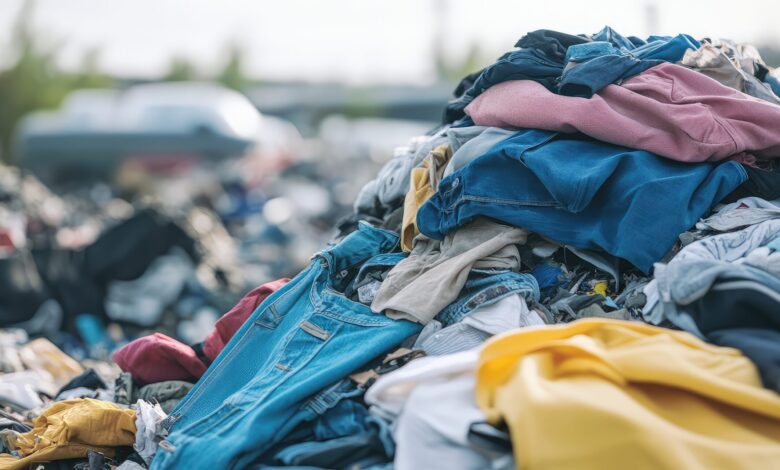
Retail returns can leave an ugly mark on the global footprint, causing millions of tonnes of CO2 emissions worldwide. Unfortunately, as more consumers seek the convenience of online returns, the problem is expected to get worse.
Consider the fact that the UK fashion industry alone generated roughly 750,000 tonnes of CO2 emissions in 2022, of which almost half came from reverse logistics processes, according to a report from the British Fashion Council. What’s more, adding to the landfills, the fashion industry accounts for a large amount of waste through items that get returned but can’t be resold, reused, or recycled.
However, UK retailers can do a better job of controlling waste and becoming more sustainable by adopting eco-friendly returns strategies and leveraging AI-powered technology.
Online returns pose a greater threat to waste reduction
In the UK, online sales exceeded £177.11 billion in 2024, the highest number of sales since 2021, representing nearly a third of sales. Yet, the convenient transactions can add a bit more strife to the global environment.
For instance, there are many steps that occur during an online return that can pile up CO2 emissions and global waste, including the back-and-forth of transport, logistics, and wasted materials. Steps involved include a retailer boxing and shipping an item purchased online; the consumer sending it back (sometimes requiring a new box or packaging materials); the retailer locating a replacement item and repackaging an item; and the retailer delivering a replacement item back to the consumer.
Compounding the issue, retailers face incidents of online returns and claims abuse, including tactics like:
- Excessive bracketing — consumers buying multiple versions or sizes of a dress, for example, with the intention of returning most of the items.
- Wardrobing — consumers buying a dress with the intention of wearing it once and returning it afterward.
These abusive behaviours eat into a retailer’s profits, elevating levels of shrink. The acts also negatively impact the environment.
Ways to develop eco-friendly returns practices
Having an eco-friendly returns practice comes with benefits beyond supporting the environment. For one, consumers who value sustainability will be more loyal to the brand. Additionally, a more efficient process can result in overall cost savings.
Some practical changes to a returns process can have a sustainable impact, including:
- Being more strategic with returns policies — Retailers can extend the returns window to encourage consumers to be more thoughtful about buying an item and keeping it. Also, stores can incentivise consumers to exchange products rather than request a refund, keeping merchandise in circulation.
- Charging fees to abusive returners — Through shopper analytics, a store can pinpoint a consumer who has a long history of frequently returning products and pass on extra fees to them. This tactic can potentially limit how much that consumer decides to return or prevent bracketing or wardrobing abuses.
- Adjusting for excessive claims — Companies can adjust a policy that if a consumer is filing an excessive number of online claims, the consumer will have shipping privileges removed and be offered the option to purchase items online for pick up at the store instead.
- Using sustainable packaging — Particularly for online orders, where materials are needed for outbound and return shipments, retailers can use lightweight, recyclable, and reusable materials to limit the landfill.
In addition to policy changes, retailers can also look to technological advancements that help power a more efficient returns process and reduce the impact on CO2 emissions and waste.
AI’s influence on returns processes
AI, predictive analytics, and data-driven decision-making is paramount to how modern retailers operate, and those operating from a unified data platform can leverage AI to read through transaction and shopper data in real time. The technology directly improves upon the returns process.
For instance, AI models monitor transactions and can flag to a retailer’s associates or customer service teams if a return seems suspicious, stopping a return from going forward and adding to the waste and impact of CO2 emissions.
Whether it’s online or in-store, associates and customer service teams can tap AI as an assistant when managing a return, relying on the technology’s ability to help speedily treat each transaction anonymously. By only reviewing a consumer’s transaction history, not reviewing personal information, AI-powered solutions can also personalise incentives, offering shoppers tailored rewards — such as exclusive offers for making sustainable choices or returning items in-store. This not only strengthens customer loyalty but also helps recover revenue at the point of return and improve the company’s bottom line.
As well, AI can support returns by helping to train staff effectively in monitoring how each retail associate processes a return and providing store managers with detailed reports on how to better train staff on returns. This coaching and training ultimately reduces errors during returns, adding to a more efficient returns process.
Sustainable returns with AI
AI and retail analytics are supporting retailers in many ways today, including helping to prevent returns fraud and reducing return rates. This advanced technology identifies patterns in return behaviours that retailers can adjust policies around and stop fraudsters before they get too far into a transaction.
Every return, transaction, and decision counts toward limiting the impact of returns on the environment. AI, along with more eco-friendly policies, can limit the waste and damage that returns are imposing on the world. From the fashion industry to retailers across various verticals, more efficient returns can limit CO2 emissions and help retailers leave a greener global footprint.





